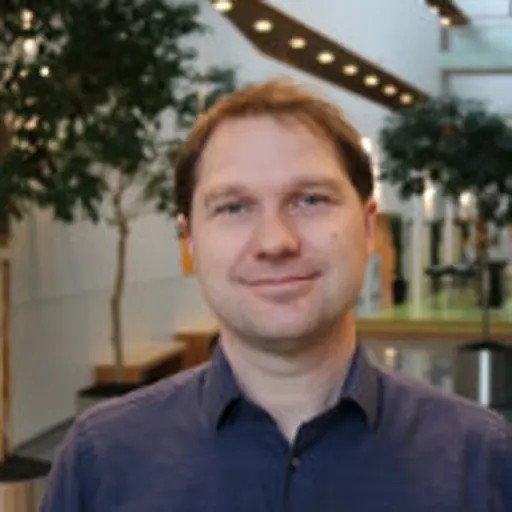The course syllabus contains changes
See changesCourse syllabus adopted 2024-02-15 by Head of Programme (or corresponding).
Overview
- Swedish nameMekanik 1
- CodeMMS135
- Credits6 Credits
- OwnerTKAUT
- Education cycleFirst-cycle
- Main field of studyAutomation and Mechatronics Engineering, Mechanical Engineering
- DepartmentMECHANICS AND MARITIME SCIENCES
- GradingTH - Pass with distinction (5), Pass with credit (4), Pass (3), Fail
Course round 1
- Teaching language Swedish
- Application code 47114
- Open for exchange studentsNo
- Only students with the course round in the programme overview.
Credit distribution
Module | Sp1 | Sp2 | Sp3 | Sp4 | Summer | Not Sp | Examination dates |
|---|---|---|---|---|---|---|---|
| 0120 Project 1.5 c Grading: UG | 1.5 c | ||||||
| 0220 Examination 4.5 c Grading: TH | 4.5 c |
|
In programmes
Examiner
- Håkan Johansson
- Professor, Dynamics, Mechanics and Maritime Sciences
Eligibility
General entry requirements for bachelor's level (first cycle)Applicants enrolled in a programme at Chalmers where the course is included in the study programme are exempted from fulfilling the requirements above.
Specific entry requirements
The same as for the programme that owns the course.Applicants enrolled in a programme at Chalmers where the course is included in the study programme are exempted from fulfilling the requirements above.
Course specific prerequisites
Linear algebra, in particular - The vector concept - Linear dependence and independence of vectors - Scalar and vector product, projections and geometry Calculus, in particular - Elementary functions (power and exponential functions, logarithmic functions, trigonometric functions) - Inequalities - Differential calculus (derivatives, extremal values) - Integral Calculus - Differential Equations An additional requirement is a basic knowledge of MATLAB (program structure, functions, matrix calculations, graphing, solution of ordinary differential equations).Aim
- Provide the ability to solve practical mechanical problems by formulating mathematical models based on fundamental laws, solving the corresponding mathematical problems, and finally assessing both the models and the derived solutions.
- Prepare for studies in related subjects, such as solid mechanics, mechanical engineering, structural engineering and manufacturing as well as advanced courses in mechanics.
- Provide the necessary foundation for communication, on questions related to mechanics, with engineers with different educational backgrounds.
Learning outcomes (after completion of the course the student should be able to)
- explain the meaning of the concepts of physical quantity, magnitude, unit of measure, and unit systems,
- carry out a dimensional analysis and assess whether a result of a calculation is reasonable
- have an understanding of the concepts of force and moments, and be able to calculate the moments of a given sytem of forces w r t a point or an axis,
- perform a reduction of a given system of forces,
- explain the meaning of the concepts of force and momentum balance, and equilibrium conditions,
- construct free body diagrams, and formulate equilibrium equations, and solve them,
- explain the meaning of the concepts of centre of mass, and centre of gravity, and to determine the centre of mass for geometrically simple bodies,
- explain the meaning of the terms static and sliding friction, and of friction conditions, and be able to solve static problems involving friction,
- explain the meaning of the concepts of statical determinacy, and static indeterminacy. and be able decide which of the concepts that applies to a given design,
- apply the relationships between position, velocity and acceleration at linear and two-dimensional curvilinear motion,
- apply Newton's second law to problems with particles in rectilinear or curvilinear motion,
- understand the concepts of work, kinetic energy, potential energy, and conservative force, as well as the relations between them, to be able to apply energy considerations to solve dynamic problems for particles,
- determine the motion of a particle, or a system of particles, when the momentum or angular momentum of is conserved,
- solve simple problems involving instantaneous impact between bodies,
- solve simple problems with free and forced oscillations, with or without damping,
Content
- Statics for rigid bodies in two and three dimensions. Special emphasis on free body diagrams, splitting material systems into subsystems, and the formulation of equilibrium equations.
- Dynamics of particles and systems of particles.
Organisation
The teaching is organised in lectures, problem solving sessions, and tutorials. The project work is carried out under supervision. During the tutorials you work independently or in groups with the possibility of direct consultation. Under certain problem solving sessions, individual problem solving can be expected.Literature
- Mekanik, av Ragnar Grahn, Per-Åke Jansson och Mikael Enelund. ISBN: 9789144116594. 4th ed. Studentlitteratur 2018.
- Formelsamling i mekanik, M.M. Japp. Will be available in digital format on the course website, and also in paper format from Dept. of Mechanics and Maritime Science.
Examination including compulsory elements
A written exam (4.5 credit points), and a computer project (1.5 credit points).The final grade is the same as the grade obtained on the written exam.
The obtain a final grade both the written exam and the computer project must have been passed.
The written exam is given digitally.
All aids allowed on the digital exam EXCEPT the consultation of another individual.
The course examiner may assess individual students in other ways than what is stated above if there are special reasons for doing so, for example if a student has a decision from Chalmers about disability study support.
The course syllabus contains changes
- Changes to course rounds:
- 2024-10-08: Examinator Examinator changed from Lars Davidson (lada) to Håkan Johansson (johho) by Viceprefekt
[Course round 1]
- 2024-10-08: Examinator Examinator changed from Lars Davidson (lada) to Håkan Johansson (johho) by Viceprefekt
